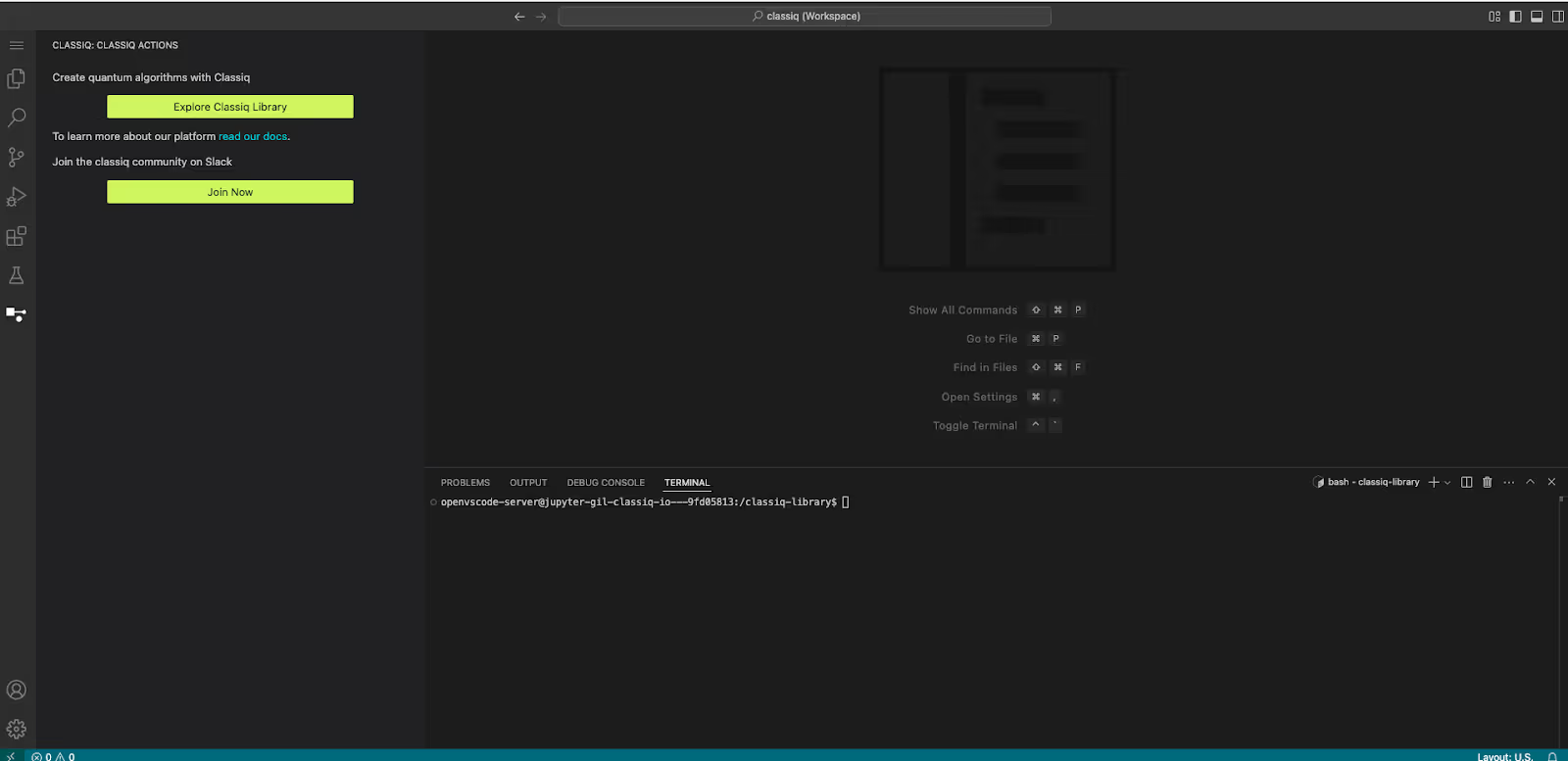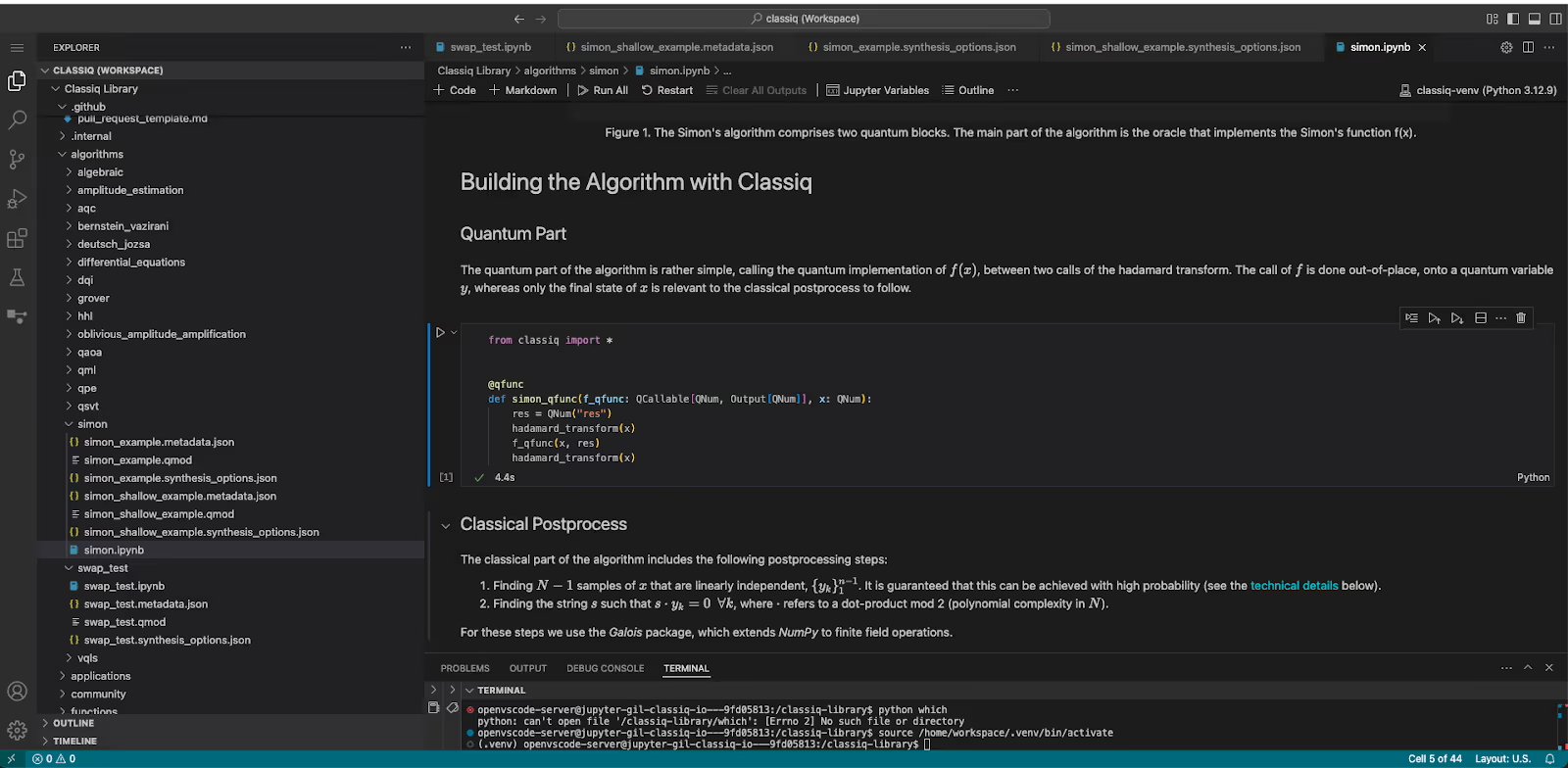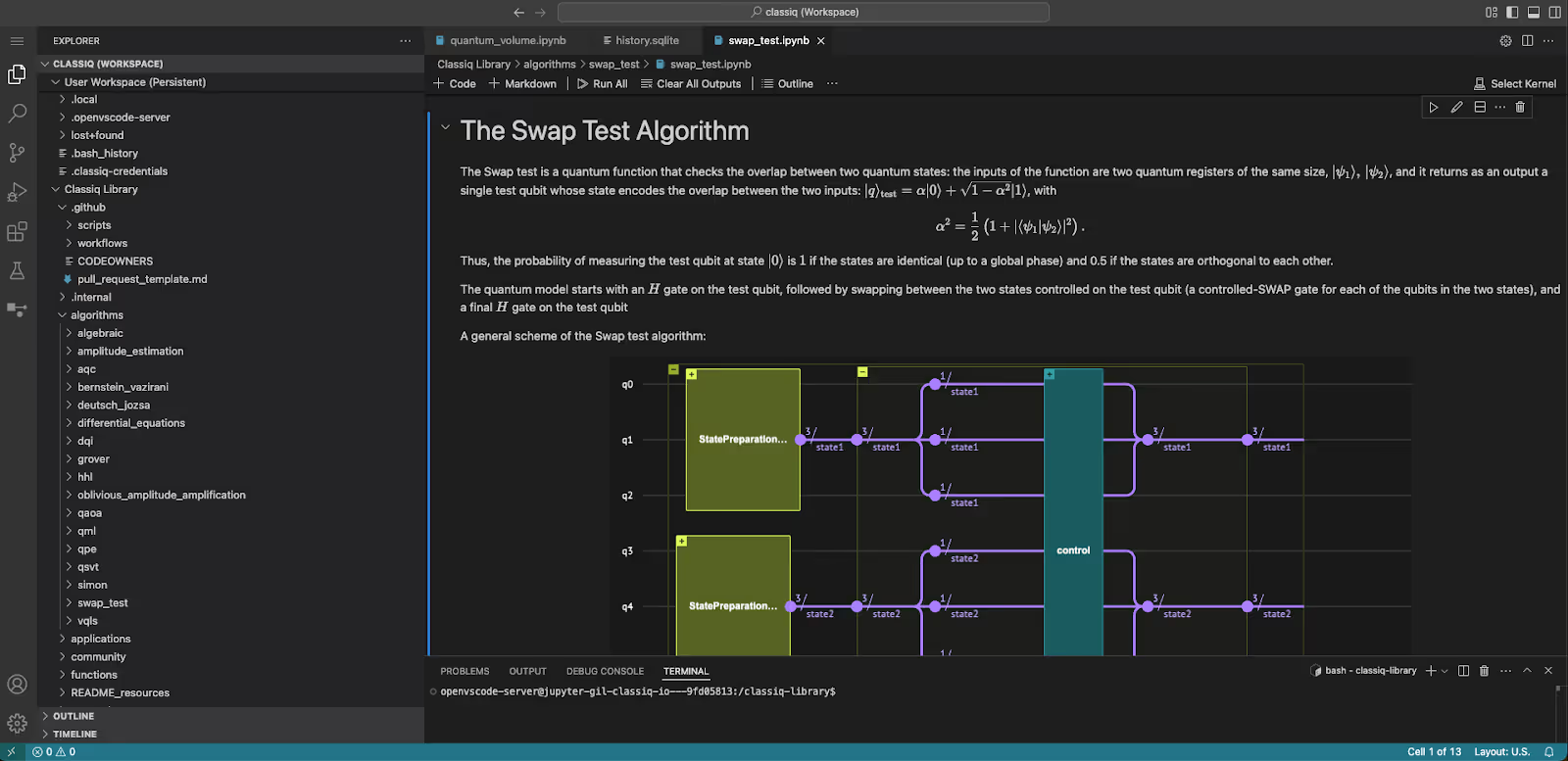Quantum development with Classiq Studio
The Journey to Enhancing Quantum Development with Classiq Studio
Quantum computing is transforming the way we solve complex computational problems, but developing quantum algorithms remains a significant challenge. Classiq Studio is a web-based Integrated Development Environment (IDE) that simplifies quantum programming through advanced modeling, synthesis, and execution capabilities. In this post, we’ll take you through the journey of developing one of our key features: a robust and seamless development environment that enhances user experience.

When we started designing this feature, our goal was clear: to make quantum development as effortless as possible. We wanted users to have an environment where they could leverage the Classiq SDK effortlessly, without worrying about installation complexities. We envisioned a system where users could run on pre-configured environments, install necessary packages with ease, and access ready-to-use examples to get started immediately.
Setting clear goals and a firm deadline was key to fast-tracking development. We targeted iQuHack 2025, MIT’s premier quantum hackathon, as our launch milestone. This gave us a focused timeline to build, test, and refine the feature under real-world conditions. The hackathon setting pushed us to move quickly, validate our approach with actual users, and gather critical feedback from the quantum computing community—all within a high-intensity, results-driven environment.
This wasn’t just a showcase—but a chance to stress-test our development environment in real-time. The hackathon deadline pushed us to prioritize essential features, streamline execution, and eliminate inefficiencies. By embracing an agile approach, we focused on what mattered most: delivering a seamless user experience and a robust, high-performance workflow under real-world conditions.
To make the experience convenient for quantum developers from various backgrounds, we opted for a preconfigured, VS Code-based environment that feels familiar to our community. We developed a custom VS Code extension focused on improving the user interface and overall workflow, laying the groundwork for more advanced debugging and deeper integration with our quantum computing framework in future releases. This user-friendly setup, which works intuitively with Jupyter notebooks, reduces complexity and allows developers to quickly start using the Classiq SDK—without the need to learn a new interface.

As part of the core implementation, we built an infrastructure that gives each user a dedicated pod on our cluster, running their own Classiq Studio environment. This setup is fully integrated with our cluster and protected by our security and authentication system, ensuring secure and controlled access. It gives each user a scalable, isolated workspace to experiment, develop, and run quantum algorithms without interference.
The Classiq library is a key resource for users, so we made sure it’s always easily accessible. To do this, we built an automated system that keeps the latest examples and models available within the environment. This is done using a sidecar container that continuously synchronizes the development environment with our repository, keeping it up to date with all available quantum algorithms. The integration allows users to explore and utilize the latest advancements in quantum development without manual updates or interruptions.

Looking Ahead This feature is a significant step towards making quantum algorithm development more accessible, but we’re just getting started. Our team continuously works on new enhancements to further streamline the development process and bring even more powerful tools into Classiq Studio.
Stay tuned for more updates as we continue to push the boundaries of quantum development!

The Journey to Enhancing Quantum Development with Classiq Studio
Quantum computing is transforming the way we solve complex computational problems, but developing quantum algorithms remains a significant challenge. Classiq Studio is a web-based Integrated Development Environment (IDE) that simplifies quantum programming through advanced modeling, synthesis, and execution capabilities. In this post, we’ll take you through the journey of developing one of our key features: a robust and seamless development environment that enhances user experience.

When we started designing this feature, our goal was clear: to make quantum development as effortless as possible. We wanted users to have an environment where they could leverage the Classiq SDK effortlessly, without worrying about installation complexities. We envisioned a system where users could run on pre-configured environments, install necessary packages with ease, and access ready-to-use examples to get started immediately.
Setting clear goals and a firm deadline was key to fast-tracking development. We targeted iQuHack 2025, MIT’s premier quantum hackathon, as our launch milestone. This gave us a focused timeline to build, test, and refine the feature under real-world conditions. The hackathon setting pushed us to move quickly, validate our approach with actual users, and gather critical feedback from the quantum computing community—all within a high-intensity, results-driven environment.
This wasn’t just a showcase—but a chance to stress-test our development environment in real-time. The hackathon deadline pushed us to prioritize essential features, streamline execution, and eliminate inefficiencies. By embracing an agile approach, we focused on what mattered most: delivering a seamless user experience and a robust, high-performance workflow under real-world conditions.
To make the experience convenient for quantum developers from various backgrounds, we opted for a preconfigured, VS Code-based environment that feels familiar to our community. We developed a custom VS Code extension focused on improving the user interface and overall workflow, laying the groundwork for more advanced debugging and deeper integration with our quantum computing framework in future releases. This user-friendly setup, which works intuitively with Jupyter notebooks, reduces complexity and allows developers to quickly start using the Classiq SDK—without the need to learn a new interface.

As part of the core implementation, we built an infrastructure that gives each user a dedicated pod on our cluster, running their own Classiq Studio environment. This setup is fully integrated with our cluster and protected by our security and authentication system, ensuring secure and controlled access. It gives each user a scalable, isolated workspace to experiment, develop, and run quantum algorithms without interference.
The Classiq library is a key resource for users, so we made sure it’s always easily accessible. To do this, we built an automated system that keeps the latest examples and models available within the environment. This is done using a sidecar container that continuously synchronizes the development environment with our repository, keeping it up to date with all available quantum algorithms. The integration allows users to explore and utilize the latest advancements in quantum development without manual updates or interruptions.

Looking Ahead This feature is a significant step towards making quantum algorithm development more accessible, but we’re just getting started. Our team continuously works on new enhancements to further streamline the development process and bring even more powerful tools into Classiq Studio.
Stay tuned for more updates as we continue to push the boundaries of quantum development!



.svg)









